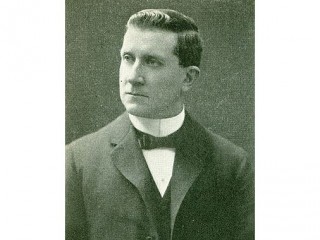
Charles Francis Murphy biography
Date of birth : 1858-06-20
Date of death : 1924-04-25
Birthplace : New York City, New York, U.S.
Nationality : American
Category : Politics
Last modified : 2011-02-08
Credited as : Politician, head of Tammany Hall,
The American politician Charles Francis Murphy was a Democratic boss who controlled Tammany Hall in New York City from 1902 to 1924.
Charles Francis Murphy, the son of Irish immigrants, was born on June 20, 1858, in New York City and raised there. He quit school at the age of 14 and held a succession of unskilled jobs. Hardworking and frugal, he saved enough money by 1880 to buy a small saloon. He made "Charlie's Place" into a popular hangout and the base of his political power in the rough East Side tenement region known as the Gas House District. In the early 1880s Murphy opened three more saloons and aligned himself with Tammany Hall in city politics.
A shrewd judge of men, a good listener, and a charitable, churchgoing Catholic, Murphy was elected Democratic leader of the Gas House District in 1892. Five years later the mayor appointed him dock commissioner, the only official public post Murphy ever held. Although he never broke the law, he stretched it by granting favored companies leases and contracts without competitive bidding. When he left office in 1901, he was close to being a millionaire.
In 1901 Tammany was without a leader, and a power struggle ensued from which Murphy emerged as Tammany Hall's new boss in 1902. In the 1903 municipal election he engineered a victory over Seth Low's reform administration, and his Tammany Democratic slates dominated city elections for the next decade. Murphy's success in a period of heightened reform feeling was in large part due to his choice of reform-minded Democrats to head the Tammany ticket and his sponsorship of such outstanding young Democrats as Robert Wagner and Alfred E. (Al) Smith.
At times Murphy's methods backfired. By 1910 he had extended his power to the state level, and in 1912 he backed William Sulzner for governor. When Sulzner proved too independent and turned against the machine, Murphy had Sulzner impeached by the Tammany-dominated state legislature in 1913. But 4 years of public disapproval followed. However, in 1917 Tammany was returned to power in the city elections.
Murphy ruled more by accommodation than autocratic direction. He was flexible enough to satisfy his constituents
with patronage, while giving the public respectable mayors and better municipal services. He responded to growing progressive sentiment by endorsing labor legislation, woman's suffrage, and the direct primary. When he died in New York City on April 25, 1924, he was at the peak of his power, working for the presidential nomination of his protege, Al Smith.
















